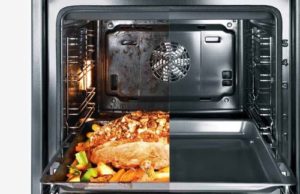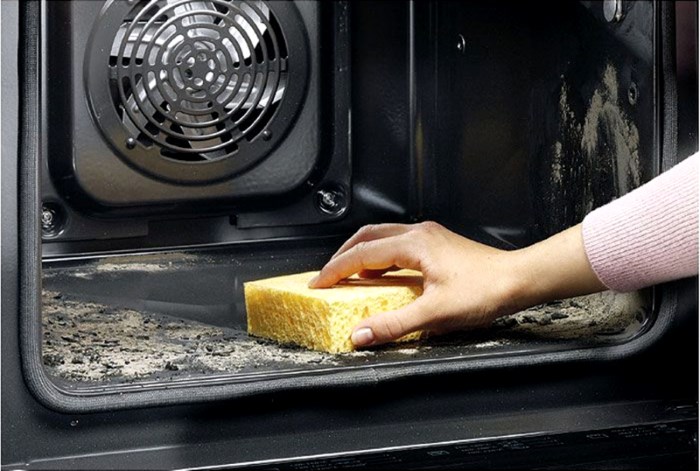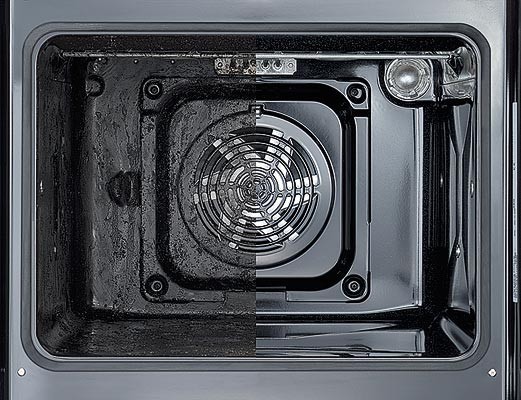 Now manufacturers of household appliances care not only about its performance, but also about the ease of care for it. This also applies to ovens. On the market you can find many ovens with various systems for removing contaminants.
Now manufacturers of household appliances care not only about its performance, but also about the ease of care for it. This also applies to ovens. On the market you can find many ovens with various systems for removing contaminants.
After cooking the perfect dishes - baked chicken or delicious meat pie - on the walls and bottom of the oven there will inevitably be fat, soot and other impurities that require cleaning. If before the hostess had to spend quite a lot of time and effort fighting them, now manufacturers are trying to correct the situation and simplify this task. Let's try to figure out what oven cleaning systems currently exist, how they work and which is the most effective and best.
Content
Types of systems and how it works
So, there are three main types of cleaning electric ovens:
- pyrolysis;
- Catholicism
- hydrolysis.
Each of the varieties works differently and has its pros and cons. We will analyze the principles of work in turn.
Pyrolysis cleaning method
It is the most aggressive and most effective. Applicable only in electric ovens, as it requires the highest temperature (up to 500 degrees).
The oven warms up to maximum temperature, and all contaminants naturally burn on the surfaces. After which the product of combustion - ashes - is removed from the oven with an ordinary rag or a special brush.
With this method of getting rid of dirt, the whole process is completely autonomous, without your participation. The manufacturers also took care of safety - the oven door is completely locked for the duration of the procedure.
Catalytic purification method
Here, the main role is played by the coating of the oven chamber - eco-enamel. It has a porous surface, in its composition oxide of copper, cerium and manganese. It is these three elements that help clean the surface - even at low temperatures, the process of decomposition of contaminants into water, carbon and organic residues begins.
On the one hand, the convenience of this method is that you do not need to specifically launch the cleaning system - it starts to work when heated from 150 degrees, that is, during cooking.
On the other hand, some parts of the chamber will have to be cleaned independently, since the bottom, the inner surface of the door, grilles, etc. do not have such a coating.
Hydrolytic treatment
This system works with steam and liquid. Here you still have to work hard, but a little easier than with the traditional method.
The bottom line is as follows. A baking tray with water is placed in a preheated oven and stays there until the water evaporates. With such an effect, the contaminants seem to “bounce off”, soak, and it becomes easier to remove. And they are removed with a rag or sponge, as usual.
The effectiveness of this method directly depends on the age of pollution and their quantity.
Pros and cons of each system
And now, knowing the operation scheme of types of cleaning ovens, consider the pros and cons of each.
Pyrolysis cleaning method
Pros:
- no washing and rubbing;
- no household chemicals required;
- the inner surface of the door is also cleaned (the door is blocked during the process);
- complete safety;
- complete elimination of pollution of any nature;
- the camera is made only of high quality materials;
- does not require disassembling into parts (grids, baking sheets and so on).
Disadvantages:
- high price.

Catalytic purification method
The advantages of such a system include:
- need a low temperature;
- energy saving.
The cons include:
- the bottom and the door do not have such a coating, therefore they are subject to traditional cleaning (manual);
- the catalytic panel is a consumable replacement material. Designed for 300 hours of cleaning;
- the service life of devices with such a system is 5 to 7 years.
Hydrolytic treatment
Pros:
- effective immediately after cooking, until the oven has cooled down;
- does not require an excessive consumption of electricity.
Minuses:
- still need manual cleaning;
- not always effective, especially if the dirt is dried up.
What else affects the complexity of cleaning surfaces
In addition to expensive ovens with automatic cleaning, there are simpler models.
The least that the manufacturer can offer now is the smooth surface of the camera. Enamel, which has no pores and roughness, does not hold contamination, and it is much easier to remove. But in this case, to refuse to help detergents does not work.
Also, no matter what type of oven you have, you should clean it regularly after each preparation. Of course, if you do not want to wipe it off half a day later.

So which system is better?
There are several ways to clean the ovens, and therefore, when choosing, it is worth starting from your own habits and preferences.
So, if you plan to bake a couple of times a week, a catalytic cleaning system is good. With infrequent use, it does not get dirty much; accordingly, it will not be difficult to remove dirt from the bottom and door.
If the use of the unit is frequent (every day or every other day), it is worth spending money on a device with a pyrolysis system. Here, first of all, it is worth taking care of the time and efforts of the hostess - she is unlikely to want to spend every day cleaning half an hour. This is where the automatic cleaning system comes to the rescue.
Conclusion
Well, we figured out the existing methods, and what type of oven cleaning is better, each individual needs to decide. In addition, the choice depends on the budget, because the most convenient (automatic) mode costs quite a lot. The frequency of use also directly determines the choice of method for cleaning ovens.